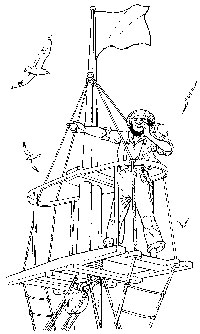F R O M T H E C R O W E ’ S N E S T
Coming Age of the Ocean

It’s easy to imagine the immediate and crippling national gridlock that would shut down the country without the federal interstate highway system. However, the gridlock we do have is a byproduct of federal highway policy.
Anyone old enough to recall the American landscape before World War II (1941-1945) might have recommendations for what might not have been done. Western Europe followed another path and claims a 50% smaller carbon footprint than the U.S. with walkable, livable, more sustainable cities and towns. The post-war U.S. needed to switch to a peacetime economy. Two major efforts that emerged were the building of a national highway system and industrialized agriculture. The oil, chemical and automobile industries, coming off federally subsidized wartime highs, were all for both.
There is a lot of science today indicating this not-well-thought-out, 65-year development spree has seen once-iconic American farmland transformed into paved suburban mall sprawl, mega-farms drenched in chemical fertilizers and pesticides, dead zones at the mouths of coastal rivers, flora and fauna ecosystems sliced up and isolated by interstate highways, crumbling cities and national parkland habitat surrounded and isolated by all of the above. This is not news.
What is new is that the federal government is again at the helm, where it can steer us either into a repetition of the same ecosystem-ignorant disaster in our oceans, or into what is internationally understood today to be the sane, measured and monitored management of a complex and little-understood global ocean resource.
As the current sole super-power, the U.S. could lead the way in the intelligent, sustainable management of the oceans, or cave in to the tax-deferred corporate foundation money that drives national ocean policy. Throwing the public a bone with an isolated marine park or sea monument, while zoning around it for oil drilling, deep ocean mining, industrial finfish aquaculture, gravel extraction, etc., should be seen for what it is—a publicity stunt. It’s a cover for same-old-same-old that delivered mountaintop removal, countless oil spills, Love Canal, Flint River, degraded drinking water, and the trans-Pacific Ocean garbage patch.
To its credit, the NEFMC, in referencing the draft ocean plan for the Northeast, has called out the Bureau of Ocean Energy Management. Fishing rights and the future of commercial fishing, just like the small farm in 1945, could be up for grabs in this coming age of the ocean.
